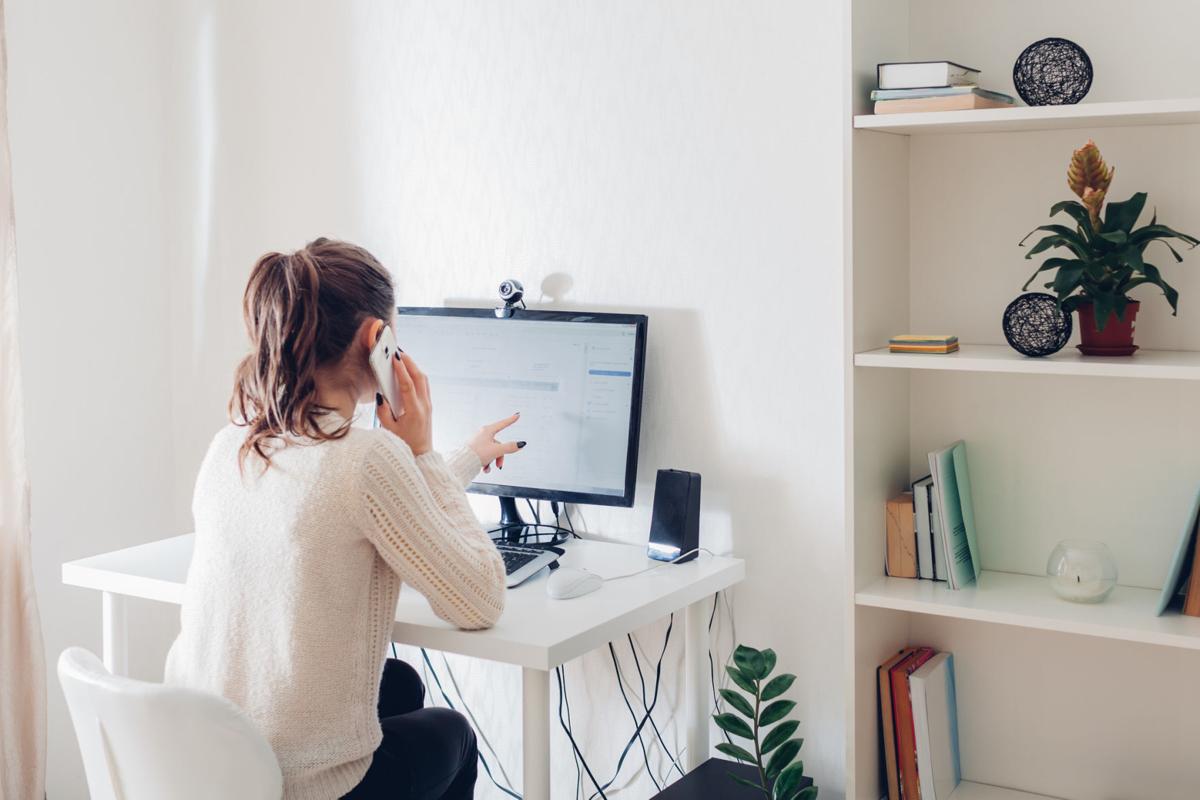Question: It looks like we will be working and schooling from home this fall. Do you have some suggestions on how to get set up?
Answer: Start by getting rid of clutter. It can be a real challenge to create spaces in your home where you can multitask and clutter makes it hard to concentrate. Unfinished projects create stress. To begin sorting, place everything into four piles. Label them: keep, donate, recycle and trash. Everything placed in the donate, recycle and trash piles needs to be purged. Then, create a place for everything in the keep pile. Consider where and how often you use an item. Use the most convenient spots for the most often used items. Then go vertical, using harder to reach spaces for less used items. Once you have purged and organized you will have more choices for creating clutter-free workspaces.
Q: Is it possible to create spaces without a huge investment?
A: Yes, the answer lies in creating dual task spaces.
- To use the space you have for the many purposes it needs to fulfill, you will most likely be using one room for two purposes. If you don’t need complete privacy for phone calls, the dining room table could work well. If you need to be able to place a call or take a class, a corner of the guest room would work well.
- Assess the equipment you will be using. If you have a laptop, you will need less room than you would with a PC. Will you need a place for a printer and files? Credenzas, hutches or armoires designed for computers with doors that close are a great option for organizing your work. At the end of the workday you can close up your workspace and not be pulled into the trap of working around the clock.
- For smaller workstations, a wall hanging desk works great. They don’t take up as much room as a full desk. It would be possible to hang a couple of desks in one room for your homeschool students and still have space left in the rest of a room.
- Creating a place for books and reference material can be solved with a shelving unit that fits over the desk area or hang floating shelves. Portable crates that can be stored out of sight when not in use are great for storing and organizing paperwork. A storage bench near the desk would allow for an extra place to sit as well as hold books or papers.
- “Lighting is so important,” says Mary Knott of Mary Fisher Designs. When setting up your workstation consider the light source. Watch the light throughout the day, taking note of the lighting during times you plan to work there. “If your back is to the light it will create shadows on your work,” Knott says. “Light needs to come from the front.”
- If you find that you have chords everywhere, you can buy special devices to organize them. If you haven’t switched to Wi-Fi for your computer and printer, now might be the time to make the switch and do away with some of your tangled piles altogether.
Q: Any other thoughts that can improve working and schooling from home?
A: Yes, hire an electrician for a couple of hours. It will be a good investment as he can make several upgrades that will make a big difference in the quality of your home office or school. Improvements include:
- Install outlets convenient to areas where you will be setting up. Before the electrician pays a visit, estimate how many outlets you’ll need. Every outlet has to be on a stud, and you want them on “open” walls, not covered up by desks and cabinets, although you can have them installed inside cabinets.
- Install a whole house surge protector on your electric panel so that you keep all electronic gear safe in case of power outages or electrical storms.
- Add fans in rooms to keep air moving and the occupants more comfortable.
If you take the time to organize your work and study spaces, you may just grow to like the changes of working and schooling at home.





